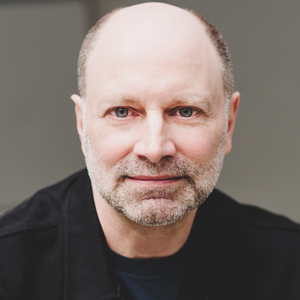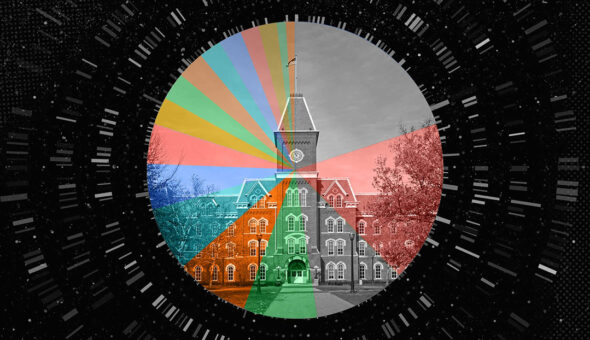Many institutions are seeing real interest in more specialized disciplines, accelerated paths to a degree or certificate, interdisciplinary study, and online and hybrid delivery.
We discussed a number of challenges and opportunities, but one common theme was emerging — all of the places I reached have been seeing significant growth in apps and enrollment over the past few years. I tried to reconcile this with all of the doom and gloom coverage of demographics shifting, schools closing (or worrying about that), parents being crazy, and people generally looking at higher education as some kind of antiquated shell game. After all, these schools sit precisely in the middle of an area of the country where the numbers of college-ready high school graduates are declining.
So I started thinking, hey, BREAKING NEWS: maybe all of this really isn’t so hard?
First, a brief digression. While I reached out to a dozen institutions, using the accepted protocol of starting with the media relations people, I heard back from very few. Those who responded were very helpful, quickly referring me to their enrollment leaders and setting up interviews. Mostly, the media relations folks said “I’ll get back to you” and never did, or more commonly, they simply didn’t respond. Sorry, friends, but the lesson I learned from that is to bypass the media relations team next time and go right to the departments. It’s okay though, I still love you.
Now, back to what the heck is going on out there (after another digression).
During my career at consumer media companies — specifically, magazines such as Newsweek and the parent company of Time, Fortune and others — one firm rule was not crossing the line drawn in the sand marking the church/state boundary between the editing, reporting and journalism side and the business side. (I think the editors were church and we were state, but that was never explained to me.) For example, it was forbidden for my colleagues in advertising to approach an editor and suggest a story idea or to advise on how the magazine should be designed and structured. They did their thing, we did ours. It worked, until it didn’t. Likewise, as a higher education marketer, I can’t imagine I would be welcome to knock on the door of a president, provost, or dean and suggest what types of degree programs they should be considering or which academic departments perhaps should be shrunk (if not eliminated).
That said, I sometimes ask myself, why not?
It’s been reported that American colleges and universities have added more than 42,000 new degree and certificate programs since 2012. Many institutions are seeing real interest in more specialized disciplines, accelerated paths to a degree or certificate, interdisciplinary study, and online and hybrid delivery. However, given the flat or declining enrollment at many institutions, presumably this strategy is having limited success. Sure, some of these programs are niches within niches — craft beer fermentation, horseshoeing theory — but for the most part, I can see how many in areas like healthcare and big data are more “practical” than the anthropology courses I once took at the University of Chicago.
Where New Programming is Working
Pace University has seen significant enrollment growth over the past few years at its campuses in New York City and Westchester County, which is a bit north. I’ve spent time there as a marketing consultant and saw a number of contributing factors: greater (and almost relentless) focus on internships, experiential learning and alumni career success in recruitment materials (the Pace Path, prospects are told), more national and international outreach beyond the traditional New York City and East Coast metros, and capital improvements on their campuses. That said, many institutions do those things and aren’t necessarily seeing big results. One area where Pace excels is programming — nimbly aligning its degree programs with disciplines which are in increasing demand by employers. Each of its six colleges has added more specialized programs and a more flexible menu towards earning a degree and certificate. People want to study the arts in New York City, so they increased their portfolio. Just recently, Pace announced a new B.S. in Behavioral Neuroscience. Why?
Because there are jobs there.
Nearby, the top enrollment folks at Adelphi and Seton Hall universities — which also have seen significant growth in apps and enrollment in recent years — agree that programming is a key to success.
"I often say that it's not one tactic that achieves growth, it's a hundred things," says Alyssa McCloud, Ph.D., Seton Hall's vice president for enrollment management. "For us, a significant differentiator has been offering and adding academic programs which are in high demand, particularly health care concentrations including occupational therapy, physical therapy, nursing, and athletic training."
She noted that many of these programs have been consolidated into a new Interprofessional Health Sciences campus in northern New Jersey, including a new medical school (the only private one in the state) and a joint B.S./M.D. This is the third consecutive year in which the entering class is the largest in the university’s history, up 12% over that time.
“Our students are attracted to newer, more specialized concentrations, often with career development in mind,” confirms Kristen Capezza, who just completed her first year as vice president for enrollment management at Adelphi University in New York’s Long Island. “Someone who might have majored in business management in the past is now considering data analytics. People with interests in the arts are concentrating in art therapy.” Adelphi is not only seeing growing numbers but also a higher quality of applicants and admits, and students increasingly are coming from farther away.
Adelphi, Pace, Seton Hall. These growing schools are not the wealthiest institutions in higher education. The people working there don’t seem to have resumes or experiences that are different from peers at other institutions. (Pace brought in a few of us with agency and industry backgrounds, but most people there have followed traditional higher ed paths.) None of them have billion-dollar fundraising campaigns or has had a huge windfall like a Bloomberg-level gift. Are these folks simply mad geniuses? Or just lucky? It seems reasonable to ask: If they (and similar institutions) are succeeding, why can’t others?
Adding Without Subtracting
“I think a big challenge in higher ed is [that] we’re adding without subtracting,” says a MarComm officer at Syracuse University who asked to not be identified as she is not directly involved in the creation of new programs. “Following a thoughtful and comprehensive Strategic Academic Plan, we’ve added programs in classrooms and online, however older programs with less demand are still fully staffed. Maybe part of the issue is faculty tenure, but a big consideration is culture and our mission as a university. By definition, we exist to do teaching and research in a variety of disciplines, to build upon the learning of past generations of scholars. It’s not our charter to only teach what’s popular or ‘in.'”
That seems fair. After all, their motto is “Knowledge crowns those who seek her.” I’m not sure precisely what that means, but it does seem to be broader and perhaps more meaningful than, “Hey, we want to make sure everyone graduates with a job.”
So we’re back to our usual quandary: Colleges and universities want to help students prepare for rewarding careers, but they’re not exclusively job factories. Everything costs money that needs to be at least partially funded by tuition. People who pay big tuition want to see some kind of return. A lot of schools look the same. And the market isn’t growing. (Sound of head exploding.)
What’s This Have to Do With Me?
You already know that the program mix has been changing. You work to announce them and position them to potential students, and you see how your peers are doing it too. However, how much of this innovation (the actual creation of and planning behind a new program) is the result of collaboration between academic leaders and MarComm departments? While the answer varies by institution, I suspect the answer generally is “not much.” Presumably the largest institutions have an institutional research team within the provost’s office to identify trends to inform new programs, however, most institutions do not have this capacity. And while strategic planning processes often bring together people from various parts of campus, the work on program creation often is limited to academic officers and faculty.
Marketing teams should insist on a seat at the table when presidents, chancellors, provosts, and deans plan programs. Likewise, presidents and CMOs should be seeking out people who can contribute to this process when making new hires.
Arguably it’s a role — particularly the market research aspect — which MarComm departments should be assisting. And mar/comm has better access to external agencies which can assist in the research process. After all, if you can show there is a real demand for something, doesn’t that make the whole process easier? There are a lot of thoughtful articles and conference panels on promoting the liberal arts, but for some audiences, it’s not going to move the needle very much for you if they’re not listening. Particularly for smaller institutions, it can be difficult to sell the big idea of “education” when people have never even heard of your own brand.
Sure thing, a lot of the marketing work which has been accelerating in the last 10 years or so makes sense — deeper market research to understand your audiences, compelling (sometimes personalized and customized) messaging delivered wherever your prospects are, increasing outreach beyond your traditional geo markets, and managing a culture of constant and relentless experimentation, measurement, and improvement. My friends at Volt have written on some of these smart strategies and resources they depend on, and they’ll continue to do so.
On top of all of this, if I were a CMO or reporting to one, I would want to play a more proactive role in helping the academic side identify a broader mix of programs which are more aligned to students’ interests and to your institution’s specific DNA. Marketing teams should insist on a seat at the table when presidents, chancellors, provosts, and deans plan programs. Maybe they should build the table. Likewise, presidents and CMOs should be seeking out people who can contribute to this process when making new hires. Not a complete elimination of church/state walls, but chipping away at them. Yes, it’s technically more work for you, more meetings, more on the to-do list. And yeah, probably not more pay. But if the end result is a more robust institution with growing apps and enrollment, isn’t this what we’re all hoping to achieve? The next time you are brainstorming and/or bitching about the state of things with colleagues, chew this over together.
So, in short, maybe all of this really isn’t that tough. But I’m willing to be wrong.








